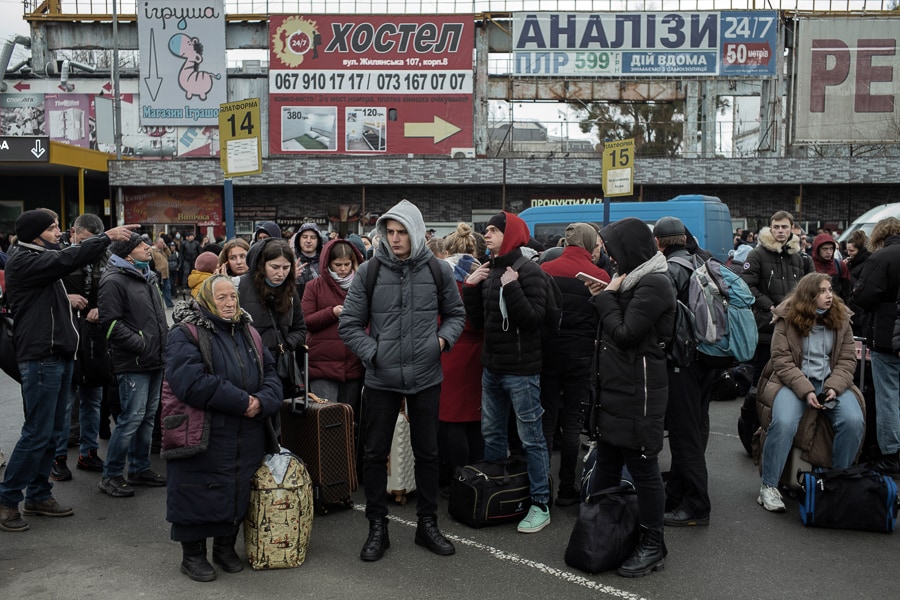
Russia enters Ukraine capital Kyiv; West condemns invasion
More than 100 Ukrainian soldiers have been killed by Russian forces invading its neighbouring country, while explosions were heard in Kyiv, the capital city
 People line up at a long distance bus station in the center of Kyiv, Ukraine, on Thursday, Feb. 24, 2022. A mass migration appears underway as residents flee the capital. (Emile Ducke/The New York Times)
People line up at a long distance bus station in the center of Kyiv, Ukraine, on Thursday, Feb. 24, 2022. A mass migration appears underway as residents flee the capital. (Emile Ducke/The New York Times)
SLOVYANSK, Ukraine — Russia continued its attack on Ukraine early Friday, one day after it invaded the country by land, sea and air, killing more than 100 Ukrainian soldiers and civilians and ominously touching off a pitched battle at the highly radioactive area around the Chernobyl nuclear reactor that melted down in 1986.
Videos verified by The New York Times showed a large explosion in the sky over the outskirts of southern Kyiv, the capital, around 4:20 a.m. Friday. Witnesses filmed fiery debris falling over parts of the city, and videos appeared to show at least two surface to air missiles being fired from Kyiv before the explosion.
On Thursday, Day 1 of the first major land war in Europe in decades, the Russian military began its attack before sunrise with the terrifying thud of artillery strikes on airports and military installations all over Ukraine. A senior Pentagon official said that three lines of Russian troops and military forces were moving swiftly toward Ukrainian cities — one heading south from Belarus toward Kyiv; another toward Kharkiv, in northeast Ukraine; and a third toward Kherson in the south, near Crimea. The forces were using missiles and long-range artillery, the official said.
By Thursday’s end, Russian special forces and airborne troops were pushing into the outskirts of Kyiv. While the ultimate goal of Russian President Vladimir Putin and his generals remained unclear, U.S. officials assessed that the end game was likely the replacement of President Volodymyr Zelenskyy’s government with a Russian-controlled puppet regime.
Early Friday morning, Zelenskyy remained in place as commander in chief, and Ukrainian forces, which officials said had shot down several Russian jets and a helicopter, were engaged in fierce battles all along a broad front line to maintain control over their country.
©2019 New York Times News Service







